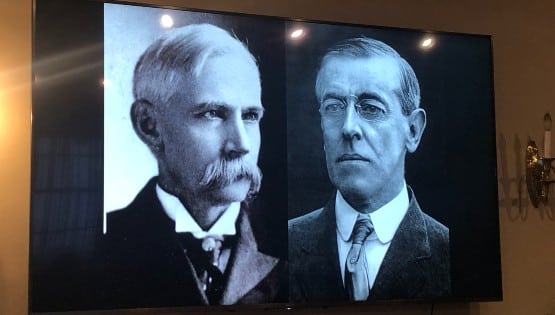
Iconic dinosaur shapes were present in animals for at least 100 million years before dinosaurs themselves actually appeared.
A study published in Thursday’s issue of Current Biology describes how a multi-institutional team of paleontologists, including Virginia Tech College of Science researcher Michelle Stocke, identified and named a new species of extinct reptile estimated to be 230 million years old – predating dinosaurs.
Called Triopticus primus — meaning the “First of Three Eyes” because the large natural pit in the top of its head lends the appearance of an “extra” eye — Triopticus bears an extremely thickened skull roof, just like the very distantly related pachycephalosaur dinosaurs that lived more than 100 million years later. And even more unexpected, many of the other extinct animals found with Triopticus resemble later dinosaurs as well.
“Triopticus is an extraordinary example of evolutionary convergence between the relatives of dinosaurs and crocodylians and later dinosaurs that is much more common than anyone ever expected,” Stocker said. “What we thought were unique body shapes in many dinosaurs actually evolved millions of years before in the Triassic Period, about 225 million years ago.”
Convergence — where distantly related animals evolve to look very similar to each other — is a widely-recognized phenomenon in evolutionary biology. A classic example of this is a bird wing and a bat wing; both animals use their wings for flight, but the inner details of those wings are different and evolved independently.
Virginia Tech researcher Michelle Stocker holds a cast of Triopticus primus specimen, displaying the area where the left eye was located.
Many of the other Triassic reptiles buried with Triopticus in the Otis Chalk fauna display structures that are easily recognized in later dinosaurs as well, such as the long snouts of Spinosaurus, the toothless beaks of ornithomimids, and the armor plates of ankylosaurs. Researchers said it is extremely rare to have so many diverse species in a single ancient community be converged upon over a broad swath of later geologic time.
“The Otis Chalk fauna is an amazing single snapshot of geologic time where you have this extraordinary range of animal body plans all present at the same time living together,” Stocker said. “Among the animals preserved in the Otis Chalk fauna, Triopticus exemplifies this phenomenon of body-shape convergence because its skull shape was repeated by very distantly related dome-headed dinosaurs more than 100 million years later.”
Dinosaurs, like these distant cousins from the Triassic Period, are all reptiles. Reptiles rapidly evolved in terms of numbers of species soon after the greatest mass extinction of all time on Earth, at the end of the Permian Period.
“After the enormous mass extinction 250 million years ago, reptiles exploded onto the scene and almost immediately diversified into many different sizes and shapes. These early body shapes were later mimicked by dinosaurs,” said Sterling Nesbitt, an assistant professor of paleontology at Virginia Tech and co-author of the study. The mimicry in body shape appears to evolve only after the extinction of the first group of reptiles.
Researchers said an important component of the study involved the use of CT technology, more commonly associated with patients, not fossils.










